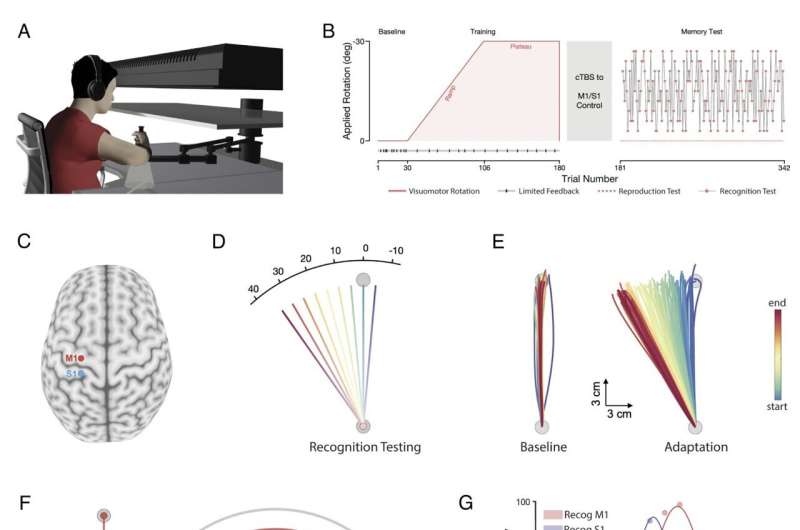February 22, 2024 feature
This article has been reviewed according to Science X's editorial process and policies. Editors have highlighted the following attributes while ensuring the content's credibility:
fact-checked
peer-reviewed publication
trusted source
proofread
Exploring how the somatosensory cortex contributes to the encoding of newly learned movements

The somatosensory cortex is a brain region known to play a role in the detection of tactile information, changes in temperature, and pain sensations. Some recent studies found that this crucial brain region is also involved in the human ability to learn and retain new motor skills.
Despite initial findings hinting at the involvement of the somatosensory cortex in motor learning, the nature of its involvement remains poorly understood.
Researchers at University of Pittsburgh Brain Institute recently carried out a study aimed at better understanding the contributions of the somatosensory cortex to the learning and retention of new movements. Their findings, published in Proceedings of the National Academy of Sciences, suggest that the somatosensory cortex could be specifically responsible for encoding new sensory targets or, in other words, learning-adapted sensory states.
"One possibility is that the somatosensory cortex is transiently engaged during movement," Shahryar Ebrahimi and David J. Ostry wrote in their paper. "Alternatively, there may be durable learning-related changes which would indicate sensory participation in the encoding of learned movements. These possibilities are dissociated by disrupting the somatosensory cortex following learning, thus targeting learning-related changes which may have occurred."
As part of their study, the researchers set out to test the hypothesis that the somatosensory cortex contributes to the retention of new movements, or in other words, "stores" information related to newly learned motions. If this were true, disrupting activity in the somatosensory cortex after a new movement is learned should result in the inability to perform these the newly learned movements.
To test their hypothesis, Ebrahimi and Ostry carried out a series of experiments involving 88 human participants. These participants were taught to perform specific motions. Subsequently, the researchers intervened in various regions of the cortex to determine the effects that these interventions would have on the participants' learning.
"The participants were trained to make movements while receiving rotated visual feedback," Ebrahimi and Ostry explained in their paper. "The primary motor cortex (M1) and the primary somatosensory cortex (S1) were targeted for continuous theta-burst stimulation, while stimulation over the occipital cortex served as a control. Retention was assessed using active movement reproduction, or recognition testing, which involved passive movements produced by a robot."
Interestingly, the researchers found that the disruption of somatosensory cortex activity impaired the participants' ability to remember movements that they had learned earlier during the experiment. The suppression of the motor cortex, on the other hand, did not affect the participants' memory of recently learned movements.
"When stimulation was applied to S1 following training with unrotated feedback, movement direction, the main dependent variable, was unaltered," Ebrahimi and Ostry wrote in the paper. "Thus, the somatosensory cortex is part of a circuit that contributes to retention, consistent with the idea that aspects of newly learned movements, possibly learning-updated sensory states (new sensory targets) which serve to guide movement, may be encoded there."
Overall, the recent findings gathered by Ebrahimi and Ostry suggest that the somatosensory cortex plays a key role in the encoding of newly learned movements and motor information. These interesting observations could pave the way for further studies focusing on the somatosensory cortex in relation to the encoding of new movements, potentially gathering precious insight about this brain region's role and possible impairments that may arise if its functioning is compromised.
More information: Shahryar Ebrahimi et al, The human somatosensory cortex contributes to the encoding of newly learned movements, Proceedings of the National Academy of Sciences (2024). DOI: 10.1073/pnas.2316294121
© 2024 Science X Network



















